WAR GRAVE
METCALFE (grave 19)
AIRCRAFTMAN II
83 SQUADRON
ABOUT MY LIFE
Born: 1921
Died: 21st May 1941
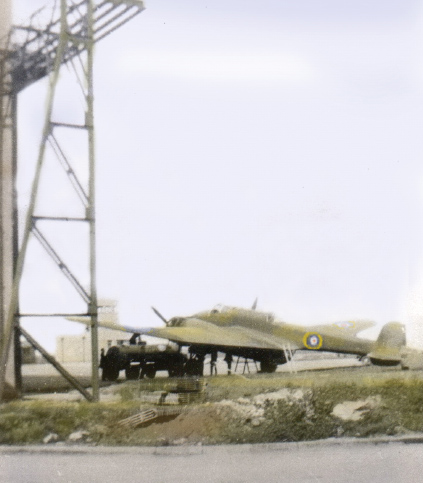
All that is known about my life at this stage is that I was the son of Edwin and Mary Elsie Metcalfe from Blackburn in Lancashire. I was 20 years old and I was assigned to 83 Squadron at Scampton in a ground role.

MY AIRCRAFT
On the day of the accident, I was flying a Handley Page Hampden L4034 of 49 Squadron. 49 Squadron had been the first RAF unit to receive the Hampden and this particular aircraft was only one year-old.
The Hampden was a medium bomber with a crew of 4. Pilot, Navigator, Wireless Operator/gunner and a further gunner. Although it was a vast improvement on the biplanes 49 Squadron had been flying just before the war opened, in reality it was already obsolete. Early daylight raids had been a disaster, the bomber was too slow to evade German fighters and its guns were no match for the Germans either. The distinctive fuselage, designed to give the aircraft a sleek, aerodynamic profile, led to the Hampden earning its nickname of “The Flying suitcase”.
Crew: 4
Span: 21.09 m
Length: 16.32 m
Height: 4.37 m
Wing area: 63.90 m²
Empty weight: 5,344 kg
Loaded weight: 8,508 kg
Engine: 2 x Bristol Pegasus XVIII 9-cylinder radial engines
Engine power: 980hp each
Maximum speed: 410 km/h
Rate of climb: 5.00 m/s
Range normal: 1,095 km
4 or 6 x 7.7mm Vickers K machine guns (1 flexible, 1 nose, 1 or 2 dorsal, 1 or 2 ventral)
1,814kg of bombs/mines or 1 x 18in torpedo
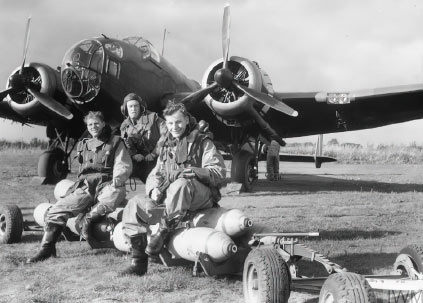
An 83 Squadron crew in front of their Hampden.
MY ROLE
I was not aircrew, and it is assumed that I was a member of the 83 Squadron ground crew, who had come along for an air experience flight.
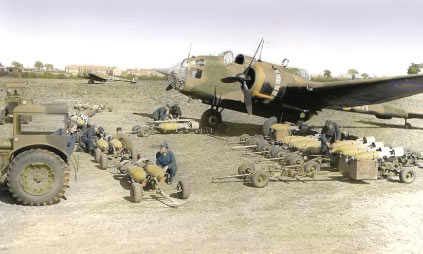

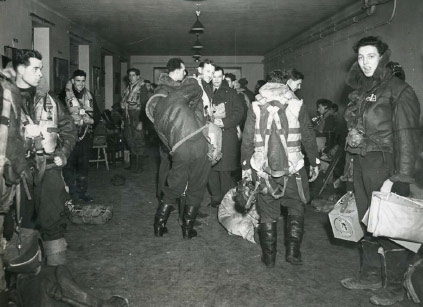
MY SQUADRON
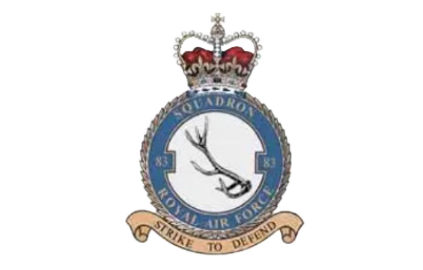
Motto: Strike to Defend
83 Squadron was formed at Montrose on 7th January 1917 as a night bomber squadron. Moving to France in March 1918, the squadron saw action on the western Front and took part in operations to counter the German’s Spring Offensive. Following the end of the war, the Squadron was disbanded on 31 December 1919.
With the threat of war once again looming over Europe, 83 squadron was reformed at RAF Turnhouse on 4th August 1936, flying the Hawker Hind biplane. In March 1938, the squadron re-equipped with Handley Page Hampdens at RAF Scampton.
In the summer of 1940, the Squadron received one of Scampton’s three Victoria Crosses due to the heroic actions of Flight Sergeant John Hannah in putting out the fire on a battle damaged Hampden.
In December 1941, the squadron re-equipped with the infamous Avro Manchester, but the poor reliability of this aircraft led to them quickly being re-equipped with the legendary Avro Lancaster, with which the squadron fought the rest of the war. In August 1942, the squadron became a pathfinder unit, leading large bomber formations to their targets and laying target indicator flares so they could be more accurately hit.
After the war, they flew Avro Lincolns and Avro Vulcans, before being disbanded in 1969.
THE ACCIDENT
Our task was a simple transit to nearby RAF Dunholme Lodge, so close that it could easily be within walking distance from Scampton. Our aircraft was Hampden AD898 wearing the squadron code OL-K and was piloted by Sergeant Olaf Stromberg. Sergeant Stromberg was a very new pilot and his inexperience is thought to have played a major part in the accident, he had just 63 hours as a solo pilot, with him only having 10 hours experience on the Hampden.
Very shortly after take-off, Sergeant Stromberg entered a very steep turn, without waiting for sufficient airspeed to develop. The fact that the undercarriage also remained down conspired with the low speed, causing the aircraft to stall and crash into the ground. There were no survivors.
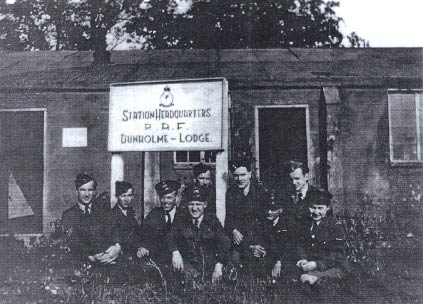
Where Next
Visit the site of RAF Dunholme Lodge near Welton.
ON THIS DAY IN WORLD WAR TWO – 21ST MAY 1941
German aircraft sink the destroyer HMS Juno off Crete.
A U-Boat sinks the American merchant ship Robin Moor, inside the security zone.
